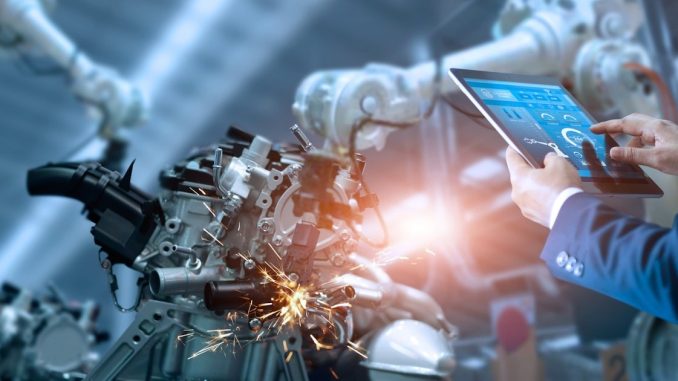
Robotics is reshaping the future of manufacturing in ways that go far beyond automation. What was once a field dominated by repetitive, mechanical tasks has evolved into a dynamic ecosystem where intelligent machines collaborate with human workers, adapt to changing conditions, and drive innovation across industries. The integration of robotics into manufacturing is not just about replacing labor—it’s about enhancing precision, scalability, and flexibility in a landscape that demands constant evolution. For business leaders and professionals navigating this transformation, understanding the implications of robotics is essential to staying competitive and future-ready.
One of the most significant shifts brought about by robotics is the move toward smart manufacturing. Robots today are equipped with sensors, machine learning algorithms, and real-time data processing capabilities that allow them to make decisions on the fly. This intelligence enables them to adjust to variations in materials, detect defects, and optimize workflows without human intervention. In a production line, for example, a robotic arm might identify a misaligned component and correct it instantly, reducing waste and improving quality. These capabilities are particularly valuable in industries like electronics or aerospace, where precision is paramount and errors can be costly.
Robotics also plays a critical role in increasing operational efficiency. Traditional manufacturing often involves downtime for maintenance, retooling, or shift changes. Robots, however, can operate continuously, with minimal interruption. They don’t require breaks, and with predictive maintenance systems, they can alert operators before a failure occurs. This consistency translates into higher throughput and more reliable delivery schedules. For manufacturers facing tight margins and demanding timelines, the ability to maintain steady production without sacrificing quality is a game-changer.
Flexibility is another area where robotics is making a profound impact. In the past, reconfiguring a production line to accommodate a new product could take weeks or even months. Today’s robots are designed to be reprogrammable and modular, allowing manufacturers to pivot quickly in response to market demands. A factory producing automotive parts can switch to medical devices with minimal downtime, simply by updating the robot’s software and adjusting its tooling. This agility supports just-in-time manufacturing models and enables companies to respond to consumer trends or supply chain disruptions with greater speed and confidence.
Collaboration between humans and robots—often referred to as cobotics—is redefining workplace dynamics. Rather than isolating robots in cages, manufacturers are increasingly deploying collaborative robots that work alongside human operators. These cobots are designed with safety features such as force sensors and vision systems that allow them to operate in shared spaces without posing a risk. The result is a more integrated and efficient workflow, where robots handle repetitive or hazardous tasks while humans focus on problem-solving, quality control, and innovation. This partnership not only boosts productivity but also enhances job satisfaction by reducing physical strain and enabling workers to engage in more meaningful activities.
Robotics is also contributing to greater sustainability in manufacturing. By optimizing resource use, reducing waste, and improving energy efficiency, robots help companies meet environmental goals without compromising performance. For example, robotic systems can precisely apply coatings or adhesives, minimizing excess and reducing emissions. In logistics, automated guided vehicles can plan routes that conserve energy and avoid congestion. These efficiencies support broader sustainability initiatives and align with consumer expectations for responsible production practices.
The adoption of robotics is not without challenges. Initial investment costs can be high, and integrating new technologies into existing systems requires careful planning and change management. Workforce adaptation is another critical factor. Employees must be trained not only to operate and maintain robotic systems but also to collaborate effectively with them. This shift demands a new set of skills, including digital literacy, data analysis, and systems thinking. Forward-looking companies are investing in upskilling programs and fostering a culture of continuous learning to ensure that their workforce evolves alongside their technology.
Global competition is also driving the adoption of robotics. Manufacturers in regions with high labor costs are turning to automation to remain viable, while those in emerging markets are leveraging robotics to leapfrog traditional development stages. This dynamic is reshaping supply chains and influencing decisions about where and how products are made. Companies must weigh factors such as labor availability, infrastructure, and regulatory environments when deploying robotic systems. The result is a more distributed and resilient manufacturing landscape, where technology enables production closer to demand and reduces reliance on centralized facilities.
Innovation in robotics continues to accelerate, with advances in artificial intelligence, machine vision, and connectivity opening new possibilities. Robots are becoming more autonomous, more adaptable, and more integrated into the broader digital ecosystem. They are part of the Industrial Internet of Things, communicating with other machines, systems, and platforms to create a cohesive and intelligent manufacturing environment. This convergence supports predictive analytics, remote monitoring, and real-time optimization, transforming factories into smart, responsive hubs of activity.
Ultimately, robotics is not just changing how things are made—it’s changing what’s possible. It’s enabling manufacturers to produce complex, customized products at scale, to operate with greater precision and efficiency, and to create safer, more engaging workplaces. For business professionals, embracing robotics means thinking strategically about technology, talent, and transformation. It means recognizing that the future of manufacturing is not a distant vision but a present reality, shaped by intelligent machines and the people who work with them. As robotics continues to evolve, its impact will extend beyond the factory floor, influencing everything from product design to customer experience and redefining the boundaries of what manufacturing can achieve.